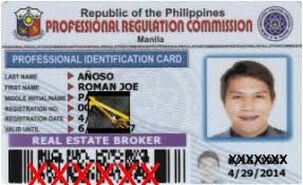Delayed Turnover of Condo or Land Subdivision Development: Refunding Payment from Real Estate DeveloperBuying your dream home is a fulfilling achievement, especially for those who wish to live in the city or suburbs. However, real estate developers may experience problems throughout the construction process, causing delays in the project completion. If this ever happens to you, it will delay the turnover of your property for months or even years. But the question is, can you refund all your payments from a real estate developer for the delayed turnover of a condominium or subdivision lot?
To find out, read on as we answer the question, “Can you refund your money if the developer delays the turnover of a condominium or subdivision project.” We will also share legal tips to resolve this situation, so let’s get started. Can You Refund Your Money if the Developer Delays the Turnover? The answer is “yes!” You can surely refund your money if the real estate developer delays the turnover of the condominium or subdivision lot you bought from them. Regardless of the reasons, whether the developer canceled the project, did not complete it, or failed to deliver it as promised, their buyers will have a right to a 100% or full refund of all the payments they made, including its interest. However, buyers can only request a refund if the developer fails to complete or deliver the project at their promised timeline. Thus, buyers who want a refund should prove that the developer is behind their timeline to complete the project. You can check the developer's timeline in a government agency called DHSUD, which stands for Department of Human Settlements and Urban Development. This agency is where the developers submit their plans and timeline of turnover of their projects. By visiting DHSUD, buyers can get proof that the developer did not deliver their project on time, allowing them to refund all their payments. Presidential Decree (PD) No. 957 Now, let's talk about the legal grounds to refund all your payments from a real estate developer if they fail to deliver your property on the promised timeline. On July 12, 1976, the late President Ferdinand Marcos initiated the Presidential Decree (PD) No.957, also known as the "Subdivision and Condominium Buyer's Protective Decree." With this decree, buyers of subdivision developments and condominium projects can protect themselves against fraudulent acts and misrepresentations of developers, sellers, and operators. Furthermore, it's a legal remedy if the developer fails to complete the project. Under Section 23 of PD No 957: "Non-Forfeiture of Payments. No installment payment made by a buyer in a subdivision or condominium project for the lot or unit he contracted to buy shall be forfeited in favor of the owner or developer when the buyer, after due notice to the owner or developer, desists from further payment due to the failure of the owner or developer to develop the subdivision or condominium project according to the approved plans and within the time limit for complying with the same. Such buyer may, at his option, be reimbursed the total amount paid, including amortization interests but excluding delinquency interests, with interest thereon, at the legal rate." Conclusion Whether you paid in full or installments, buyers can request a refund of 100% of total payments, including the amortization interests, given they meet the decree's grounds. On the other hand, buyers cannot demand a refund just because they changed their mind. Therefore, buyers can only refund the total amount paid to a real estate developer due to their failure to complete or deliver the condominium or subdivision project based on the approved plans and prescribed timeline. In short, PD No 957 resolves the issue of delayed turnover to protect the welfare and rights of property buyers.
0 Comments
Adverse Possession: How to Acquire a Property Without Buying Are you occupying a lot that is not yours legally or residing at a property with no one claiming ownership? Whichever the case may be, you're in the right place. If you're wondering if you can get a title for a lot you have been occupying for a long time, the answer is "yes." But how do you get a title for a property that is not yours?
How can you claim it if you don’t have any documents proving ownership? To find out, read on as we share how to acquire a property via adverse possession. What is Adverse Possession? Adverse possession refers to a legal process where a non-owner who occupies or possesses a piece of land of another person is granted a right to obtain title and ownership of the said property after residing for a certain period. Under this process, the occupant or possessor can apply for the property's title given they meet certain conditions, whether they continuously possess the property or infringe the rights of the true landowner. Despite unlawfully occupying unused or uninhabited land, adverse possession gives illegal settlers the right to acquire property without buying. Hence, it's often called squatter's rights or homesteading. Nonetheless, an occupant or disseisor must prove they meet several criteria, which may vary per state before the court allows their claim. For instance, most states require the claimant to provide a deed and proof of payment for the property’s taxes. Each state also has a different statutory period for adverse possession. For example, the state's predetermined statutory period is twenty (20) years. Adverse possession will be successful if the claimant or occupant continuously and exclusively uses or possesses the property. But the disseisor or occupant's claim under adverse possession will be invalidated if the true landowner performs or pays any maintenance on the property in the 19th year. Although this process may provide rights to non-owners, landowners can prevent adverse possession by taking necessary measures and fulfilling their obligations to their property. On the other hand, the law may favor the adverse possessor as a reward for productively using the land, given the true landowner sleeps on their rights. Therefore, you may acquire a property without buying it, given you meet the statutory requirements for adverse possession. You can even obtain legal title to claim ownership of the said property. How to Acquire Property via Adverse Possession? As stated in the Republic Act 10023, or " An Act Authorizing the Issuance of Free Patents to Residential Lands," a Filipino will obtain the right to get a title for a property that they have been occupying for a long time, given they have been staying at it for over ten (10) years. Furthermore, the property must be classified as alienable and disposable, which means it's not a protected land and not yet titled under other people’s names. This law aims to provide Filipinos with legal and titled residence. At the same time, the law punishes landowners who don’t use their property productively. But do note, acquiring a property through adverse possession can only be done once in your residence address where you've been residing for over ten (10) years. You must also comply with requirements before acquiring a property via adverse possession. Through RA 10023, you may apply for a title given the property you've occupied for more than ten (10) years meets the required land size based on the city or municipality of location. Most importantly, the property should not be needed for public use or service before the court allows your claim. Thus, you should meet and comply with the qualifications and requirements to apply for a Free Patent Title under RA 10023. 4 Steps to Transfer Lot with Tax Declaration Only Have you recently purchased a lot without a title? Or you're interested in buying a lot, but the seller only holds a Tax Declaration? Whatever the case may be, you've come to the right place. Many homebuyers or real estate investors who buy from sellers without titles often have problems transferring the property's ownership under their name. Thus, buying a lot with a title is ideal to be on the safe side. But what if the lot has no title but only a Tax Declaration? Can you transfer its ownership to your name?
Contrary to what others believe, a buyer can still transfer the lot to their name and ensure its ownership even if it doesn't have a title, given the seller has a Tax Declaration. So, if you're wondering how to transfer a property with no land title, keep reading as we share the four (4) steps to transfer a lot with Tax Declaration only. Step 1: Get the CAR from BIR. First, secure a Certificate Authorizing Registration (CAR) issued by the Bureau of Internal Revenue (BIR). This document is a requirement before performing any transfer of shares. To request this document from the BIR, you must present a legal document proving you purchased the property. Thus, prepare the Deed of Absolute Sale before visiting the BIR. The Deed of Absolute Sale is made and notarized by a lawyer and signed by two (2) witnesses. At the BIR, you should also pay the Documentary Stamp Tax (DST), equivalent to 1.5% of the selling price, zonal value, or fair market value, whichever is higher. Moreover, you should pay the Capital Gains Tax (CGT), equal to 6% of the selling price, zonal value, or fair market value, whichever is higher. Step 2: Go to the Treasurer’s Office. The second step is to visit the Treasurer's Office at the City Hall, Municipal Hall, or Capitol. When visiting the Treasurer's Office, bring the CAR you've obtained from the BIR. In addition, you should pay the Transfer Tax Fee, equal to 0.5% of the selling price, zonal value, or fair market value, whichever is higher. Step 3: Proceed to the Registry of Deeds. After paying the Transfer Tax Fee, the next step is to visit the Registry of Deeds. Here, you will submit the original requirements, such as the Deed of Absolute Sale, Tax Declaration, and other documents required for transferring property. Aside from that, you'll need a Department of Agrarian Reform (DAR) Certificate if the property you wish to transfer is agricultural land. Step 4: Visit the Assessor’s Office. Once you have submitted the documentary requirements to the Registry of Deeds, the final step is to visit the Assessor's Office. At the Assessor's Office, you can change the name of the Tax Declaration from the buyer to your name. Registering the property you purchased under your name is essential, even if it doesn't have a title yet. Doing this step can ensure the property you purchase is safe and legally registered under your name despite only having a Tax Declaration. Thus, in case problems arise in the future, you can ensure ownership of the property. But before you purchase a property, ensure it’s categorized as Alienable and Disposable. It means the property is not a protected land and not privately owned. By doing so, you can ensure that the property you’re buying can be titled someday. 5 Steps to Get a Land Title for Property with Tax Declaration OnlyThe Original Certificate of Title (OCT) proves the ownership of a land, house-and-lot, or townhouse. The same goes for the Transfer Certificate of Title and Condominium Certificate of Title. But what if the property you plan to buy has a Tax Declaration only? How do you guarantee the ownership of the property? It's also ideal to get a title to ensure buyers you're legally entitled to sell a property that only has a Tax Declaration.
Now, the question is, how do you get an Original Certificate of Title if the property only has a Tax Declaration? Keep reading as we share the five (5) steps to transfer Tax Declaration to Land Title. Step 1: Visit DENR. Whether buying or transferring a property with a Tax Declaration only, you should first visit the Department of Environment and Natural Resources (DENR). Once at the DENR, look for the Community Environment and Natural Resources Office (CENRO) or the Provincial Environment and Natural Resources Office (PENRO). Submit your requirements, such as the Tax Declaration, in any of these offices. This document is solid evidence that proves you're occupying or residing at the property you’re titling. However, there are qualifications you should meet for titling property with a Tax Declaration. For instance, you should reside at the said property for at least ten (10) years, except if you're a Filipino citizen. You can also secure the required forms from the DENR, including the Residential Free Patent Form and Affidavit of two (2) Disinterested Persons. After filling out the forms, ensure to get it notarized. In addition, get other certificates you'll need from the DENR, such as the Lot Status Certificate. This certificate determines if the property you're requesting for titling has no existing title under other people's names and technical descriptions. The DENR also issues an A&D Certificate (Alienable and Disposable), which ensures the property is not a protected land. Also, DENR will give a complete list of requirements you should secure from other government agencies. Step 2: Get the Transmittal Form/Order of Award. After submitting the documentary requirements, proceed to the next step, obtaining the Transmittal Form or Order of Award from the DENR Regional Office. The Transmittal Form contains your name and indicates an approved request. But before that, DENR will visit your property to conduct an investigation and inspection, ensuring you’re occupying the property for over ten (10) years. During the inspection, DENR will take pictures and question your neighbors. Aside from the inspection, DENR will go to the Barangay Hall to disseminate information. They will post a notice of your application regarding the titling of property to inform the entire Barangay. So, in case someone is claiming the property, they have an opportunity to tell their side. Step 3: Go to the Registry of Deeds (RD). When you visit the Registry of Deeds, bring the Transmittal Form from the DENR Regional Office. Also, don't forget the copy of your Tax Declaration. Then, they will advise you when to return to claim the property title. Step 4: Claim the Original Certificate of Title (OCT) at RD. Return to RD to claim the Original Certificate of Title (OCT). This document is the first title issued on a property. Therefore, you’re the first person to receive the title of that property. Step 5: Head to the Assessor’s Office. Once you receive the property title, proceed to the Assessor's Office to update the Tax Declaration. The Assessor's Office will update their records that the previous Tax Declaration has a title. Now, you've successfully obtained an Original Certificate of Title (OCT), proving ownership of your property. |
Archives
July 2024
Categories
All
|
Hi! Welcome to our website. Having an agent/broker on your real estate search is a gift because with or without them the price of the property is always the same. They give you FREE SERVICE and only pure service. On your part, everything is to gain. Claim your gift now! :)
meet your Real estate Broker Partner:
Roman Joe Anoso, RN, REB
Real estate Broker PRC license number: 19887
HLURB registration number: CAR-B-05/21-029
HLURB registration number: CAR-B-05/21-029
Roman joe Anoso is a multi-awarded real estate broker, consistent Top #1 for 8 years to date, being recognized by the following companies:
Suntrust Properties, Inc.
- Overall Nationwide Top # 1 Real estate broker year 2018:
Vista Residences, Inc.
- Overall Nationwide Top # 1 Real estate broker year 2017:
Goshen Land capital, inc.
- Overall Nationwide Top # 1 Real estate broker year 2011 to 2016:
Suntrust Properties, Inc.
- Overall Nationwide Top # 1 Real estate broker year 2018:
Vista Residences, Inc.
- Overall Nationwide Top # 1 Real estate broker year 2017:
Goshen Land capital, inc.
- Overall Nationwide Top # 1 Real estate broker year 2011 to 2016:
office address: REALS Corporation, Barangay Dontogan, Baguio city, 2600
personal: +63917-5645-863
viber/whatsapp: +63917-5645-863
add him on facebook (CLICK HERE)
office landline: 074-442-2353 (for clearer conversation)
email: [email protected]
skype: romankat2
website: www.realestatebaguio.com
personal: +63917-5645-863
viber/whatsapp: +63917-5645-863
add him on facebook (CLICK HERE)
office landline: 074-442-2353 (for clearer conversation)
email: [email protected]
skype: romankat2
website: www.realestatebaguio.com
official Real Estate Brokerage Website of REALS Corporation
for our affiliate program CLICK HERE
for our affiliate program CLICK HERE

 RSS Feed
RSS Feed




